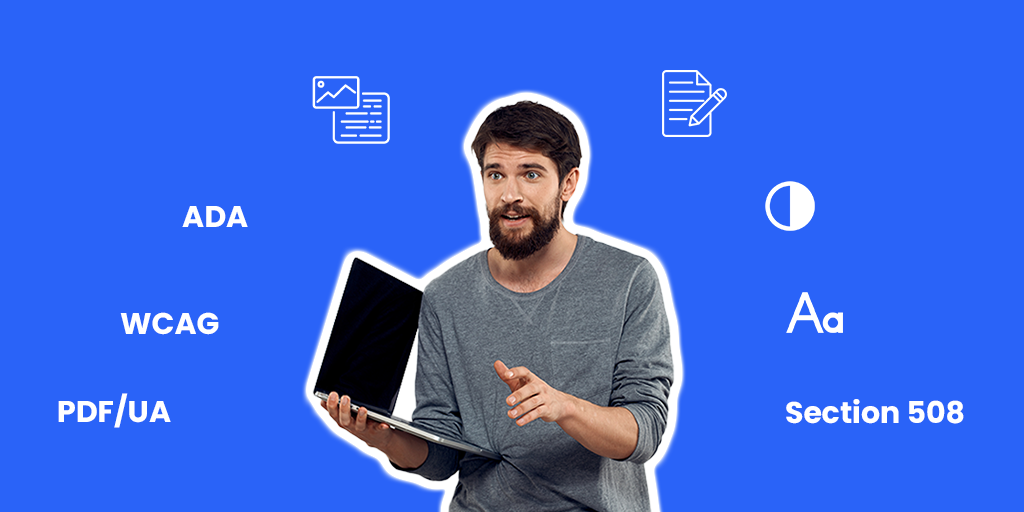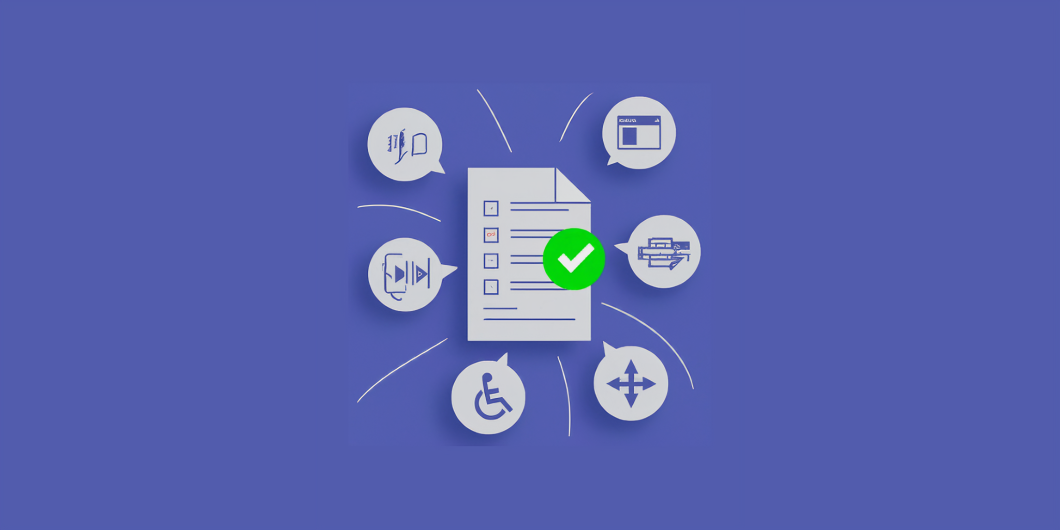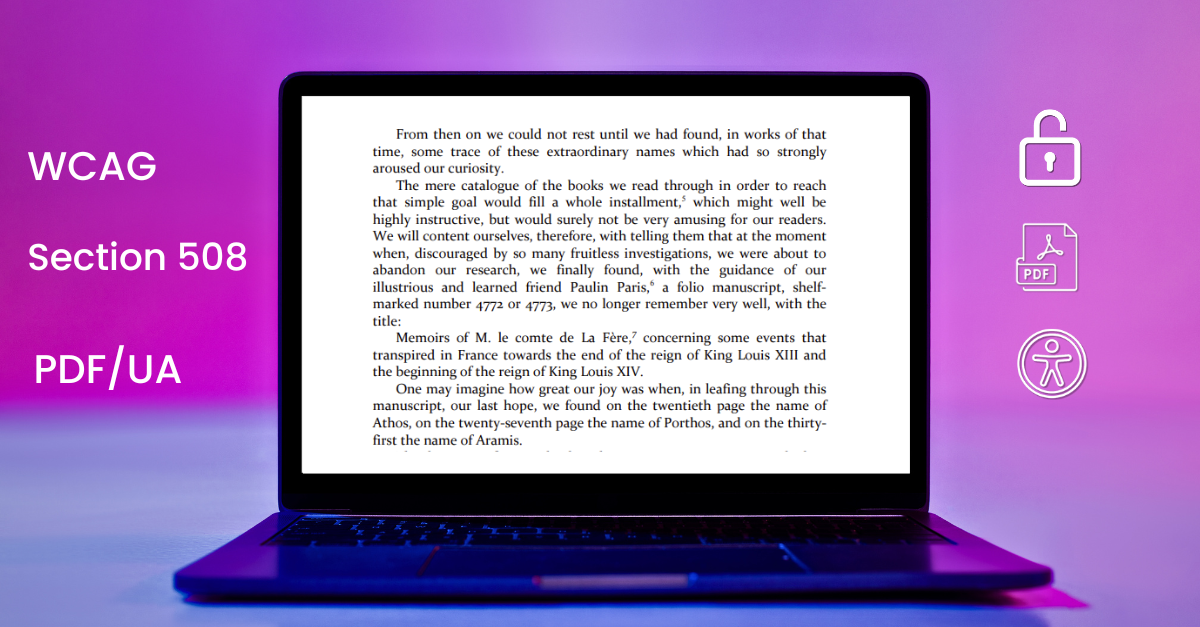As organizations strive to meet accessibility compliance standards like WCAG, Section 508, and the European Accessibility Act (EAA), choosing the right PDF accessibility partner is essential. Whether you are a publisher, government agency, educational institution, or enterprise, ensuring your PDFs are accessible to all users, including those with disabilities, is a legal as well as ethical priority.
But how do you know which document remediation company is right for you?
Here are the 5 key things to look for when evaluating a PDF accessibility service provider:
1. Expertise in WCAG, Section 508, PDF/UA and EAA Compliance
Why it matters: Accessibility is more than just adding tags to a PDF but making documents truly usable for people with visual, cognitive, and motor impairments. Your partner should have deep expertise in international accessibility standards, mandates and guidelines including:
- WCAG 2.1 or 2.2 (AA level)
- Section 508 (U.S. federal compliance)
- PDF/UA
- EAA (European Accessibility Act)
- AODA (Accessibility for Ontarians with Disabilities Act)
Ask for real-world examples of their compliance success. A knowledgeable provider will confidently walk you through how they tackle legal and functional accessibility in complex documents.
2. Human-Led Remediation and Automation
Why it matters: Automated tools can help detect issues, but true PDF accessibility requires manual checks and tagging by trained professionals. Automated-only solutions often miss complex structures like tables, charts, forms, or nested lists.
Look for a partner who uses a hybrid approach; combining intelligent automation with expert human remediation to ensure documents are both compliant and user-friendly for assistive technologies like screen readers.
3. Capability to Handle Volume and Complexity
Why it matters: Not all PDF remediation companies can scale to meet high-volume, enterprise-grade requirements or handle intricate layouts such as academic publications, financial reports, or legal documents.
Questions to ask the service provider:
- Can they remediate thousands of pages within tight deadlines?
- Can they work with multilingual documents?
- Do they handle rich media and interactive content?
The ideal partner should offer scalable PDF accessibility solutions for both simple and highly technical content.
4. Transparent QA Processes and Reporting
Why it matters: Compliance does not stop with remediation. As an organization or individual, you need confidence that the final output meets standards. Choose a vendor that offers a robust quality assurance process, including:
- Multiple rounds of internal review
- Assistive technology (AT) testing with tools like JAWS, NVDA, and VoiceOver
- Detailed compliance reports and VPATs (Voluntary Product Accessibility Templates)
Transparency in reporting provides peace of mind and documentation for audits or legal proof of compliance.
5. Long-Term Partnership and Accessibility Mindset
Why it matters: The right partner will guide you beyond basic compliance, helping you embed accessibility into your workflows.
Look for a team that:
- Educates your staff
- Provides accessibility training and documentation
- Offers ongoing support for new document updates or recurring content needs
Accessibility is about inclusion, and a partner who shares your values will help you build a truly inclusive digital presence.
Choose a PDF Accessibility Partner You Can Trust
Your organization’s reputation, legal compliance, and commitment to inclusivity all hinge on your accessibility efforts. Choosing the right PDF remediation partner ensures your documents are readable, navigable, and inclusive for every user.
At Documenta11y, we specialize in high-quality, human-led PDF accessibility services for organizations that care about doing it right. With deep expertise in global compliance standards and a commitment to inclusive access, we are here to help you every step of the way.
Book a free consultation today and see how Documenta11y can transform your PDFs into fully compliant, inclusive digital documents.
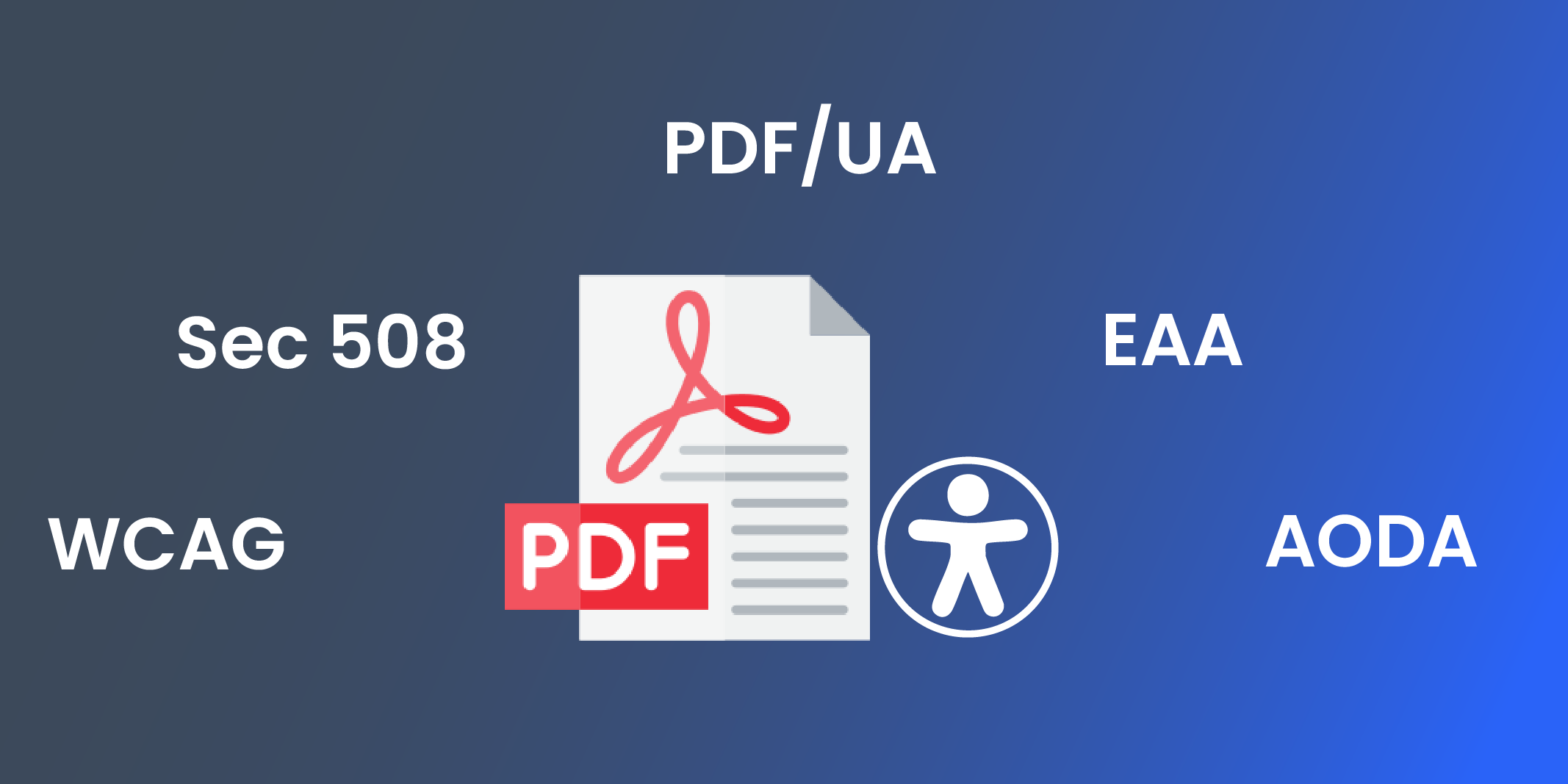
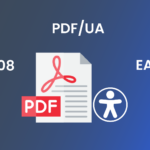 5 Key Things to Look for When Choosing a PDF Accessibility Partner
5 Key Things to Look for When Choosing a PDF Accessibility Partner How Semantic Structure and Regions Improve Digital Accessibility
How Semantic Structure and Regions Improve Digital Accessibility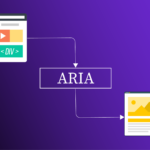 Less ARIA, More Accessibility: Documenta11y's Guide to Cleaner Web Content
Less ARIA, More Accessibility: Documenta11y's Guide to Cleaner Web Content